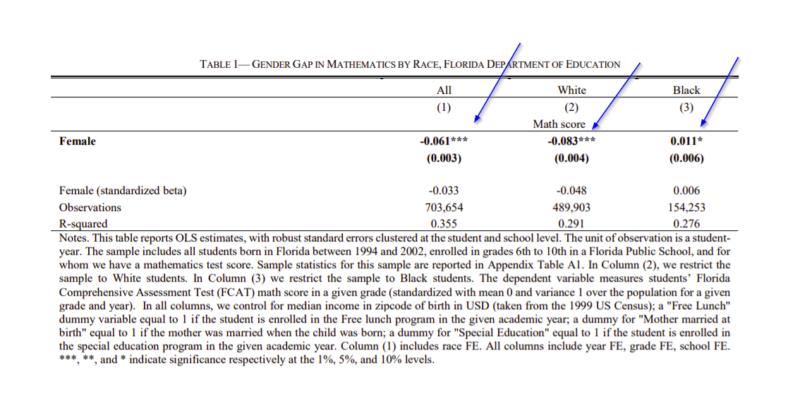The Family Origin of the Math Gender Gap is a White Affluent Phenomenon
- Dossi, Figlio, Giuliano and Sapienza
- NBER working paper, 2020
- A version of this paper can be found here
- Want to read our summaries of academic finance papers? Check out our Academic Research Insight category
What are the Research Questions?
In chapter 11 of our book, we tackle the difficult question, “Where are the Women in Finance?” There are some clues from social research that paints a picture of women as a group disinterested, by nature or nurture, to enter competitive situations. In addition to this, there exists a documented gender gap in math that helps to explain the underrepresentation. The authors of the paper delve deeper into the latter and ask the following research questions:
- Does the gender gap in mathematics vary by race?
- Does the gender gap in mathematics vary by socio-economic status?
What are the Academic Insights?
By using a large dataset combining information from the Florida Department of Education and individual-level information coming from the Florida Bureau of Vital Statistics birth certificates, the authors find that:
1. YES- the math gender gap varies by race and socioeconomic status. Specifically, girls perform worse than boys in mathematics in a regression including grade, year, school fixed effects, and a large set of individual controls. Additionally, the gender gap is pronounced among white girls and finally, a different picture appears when we investigate the sample of black girls, who, instead, perform better than boys.
2. YES- When looking among the socio-economic status (identified by the researchers based on two measures: eligibility for free or reduced-price lunch and maternal education), the math gender gap is predominant in white affluent families while differences are not present among girls belonging to black families.
Why does it matter?
This paper adds to the literature and provides evidence of important heterogeneity in the transmission of gender biases within the family. Interestingly enough, the spread in math scores between girls and boys differs by race. White girls score lower than white boys, but black girls actually score higher than black boys.
The Most Important Chart from the Paper:

Abstract
Previous research has shown that norms around the role of women in society could help explain the gender gap in mathematics and that these norms could be transmitted within the family. Using data from the Florida Department of Education combined with birth certificates we uncover important heterogeneity in the transmission of gender biases within the family. We find that gender role norms can explain the lower performance of girls in mathematics only in relatively affluent White families, whereas they do not apparently matter for the performance of Black girls.
